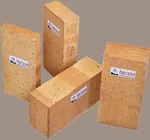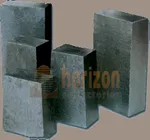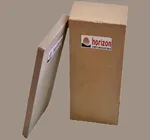Choosing the Best Refractory Bricks for Industrial Use
Understanding the Importance of Refractory Bricks
Refractory bricks remain essential for applications that need high temperature operation alongside excellent thermal shock resistance along with durability properties. The specialized bricks follow a melting process that takes place in furnaces and kilns and reactors used by steel industries together with cement operations and glass production and petrochemical activities. The absence of suitable refractory materials in such high-temperature conditions allows extreme heat to degrade the structures which raises operational time costs and poses safety hazards
A correctly selected refractory brick material delivers extended reliability together with effective operation and suitable performance in hot temperature applications. Multiple defining elements must be evaluated for refractory brick selection such as composition along with thermal conductivity and chemical resistance.
Types of Refractory Bricks and Their Applications
Refractory bricks are classified based on their chemical composition. Acidic bricks, like silica and fire clay bricks, are best suited for environments involving acidic slag and gases. Basic bricks like magnesia and dolomite are appropriate for use in the presence of basic slag; alumina and chromite-neutral bricks, on the other hand, proffer stability in a variety of conditions. Each type, then, is endowed with specific functions, making it necessary that the specified type be chosen depending on the required resistance to temperature, thermal expansion, and corrosion.
Key Factors to Consider When Choosing Refractory Bricks
For this reason, in selecting the best refractory bricks, careful consideration is given to operating conditions, thermal shock resistance, and mechanical strength. The temperature range is very important, since some applications require bricks that can withstand over 1,800°C. Alternate thermal expansion and contraction must also be considered to avoid cracking.
Ensuring Longevity and Cost Efficiency in Industrial Applications
Invest in refractory bricks of good quality to have the utmost advantage in the long-term in terms of cost and bringing stability for operations. Proper selection of the right refractory bricks along with planned maintenance efforts will be of great benefit to the industries by reducing downtimes, replacement costs, and increased overall production efficiency.
New improved high-quality refractory bricks are the foundation of long-term cost-effectivity and operational stability. Proper installation and maintenance practices can increase longevity time significantly for refractory linings. Important processes such as proper curing, controlled heating, and inspection all contribute to avoiding premature failure.
. More advanced forms of refractory such as high-alumina bricks or castable refractories increase durability and performance, in addition to benefits on maintenance that proper choice of refractory bricks and proactive maintenance will provide. Thus in complexes, by ensuring proper maintenance strategies and proper selection of refractories, there, will be less downtime, lower replacement costs, and an increase in overall efficiency of production.






